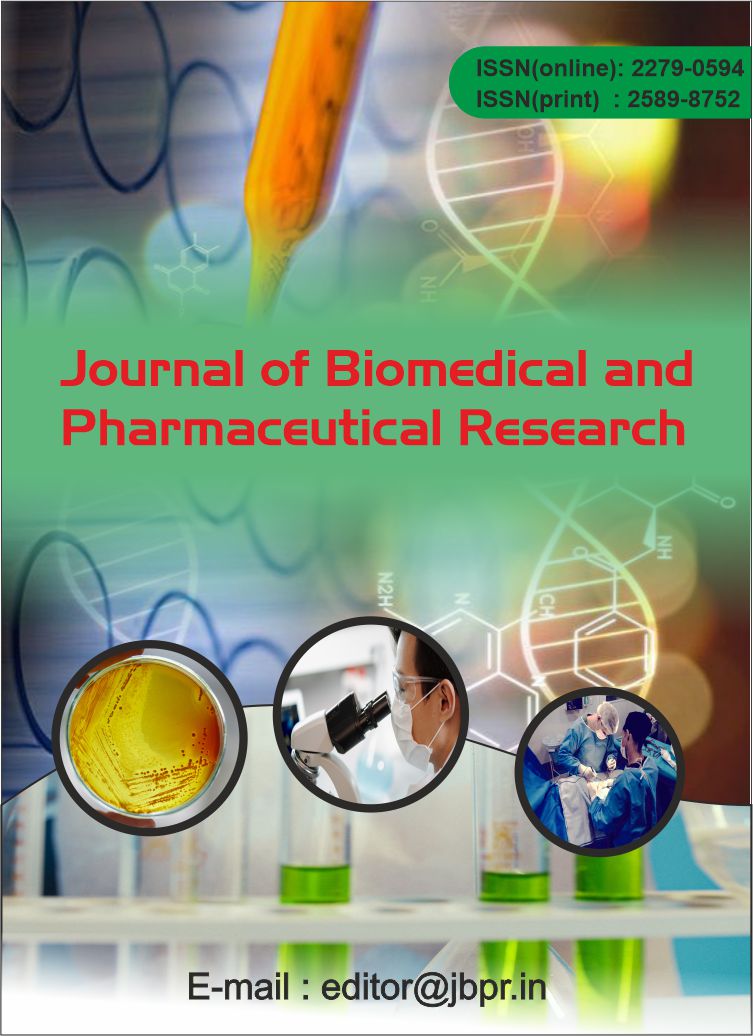STUDY OF TRAMADOL AND DEXMEDETOMIDINE HYDROCHLORIDE FOR THE TREATMENT OF POST-SPINAL ANESTHESIA SHIVERING
Abstract
BACKGROUND: Vasoconstriction and hypothermia come before shivering. The involuntary muscular action known as shivering raises basal metabolic heat generation by about 600%. Cooling the preoptic area of the hypothalamus can cause shivering. Warming the skin can help treat shivering during regional anesthesia because it increases the amount of core hypothermia that can be tolerated by increasing the cutaneous thermal input to the central thermoregulatory system. Cooling the preoptic area of the hypothalamus causes shivering. The medial forebrain bundle receives efferent impulses that are responsible for shivering. Traditionally, it was believed that the posterior hypothalamus was the source of a central descending shivering route. The prevalence of morbid cardiac events in patients with coronary artery disease or those at high risk for developing the disease is doubled in cases of mild perioperative hypothermia.
AIM: The aim of this study was to compare and evaluate the effectiveness of the two drugs, dexmedetomidine and tramadol for control of post-spinal anesthesia shivering.
MATERIAL AND METHOD: This study was conducted in the department of Anesthesia using a double blind, randomized design. All participants gave their informed written agreement regarding their participation in the study and the use of their data for the current research project. Out of the 200 patients in this trial, 100 experienced shivering. The hospital planned to provide spinal anesthesia on these 100 patients, who ranged in age from 19 to 68 and belonged to ASA PS I, II, and III. The patients were randomized in two groups of 50 patients each to receive either dexmedetomidine 0.5μg/kg or tramadol 0.5mg/kg as an intravenous infusion via syringe pump. At predetermined intervals, the degree of shivering, when it started, when it stopped, whether it happened again, and any negative effects were noted.
RESULTS: Compared to tramadol, dexmedetomidine was found to considerably reduce the amount of time needed for shivering to stop. With tramadol, shivering is much more likely to return. Significantly more vomiting and nausea were seen in the tramadol group. Despite the fact that both medications work, dexmedetomidine causes shivering to stop sooner than tramadol does. Furthermore, there are very little side effects with dexmedetomidine, but tramadol causes noticeable nausea and vomiting. 28 patients from orthopedic surgery, 43 from general surgery, 115 from uro-surgery, and 14 from gynecological surgery were among the 200 patients who were first enrolled for the study.
CONCLUSION: Tramadol (0.5 mg/kg) and dexmedetomidine (0.5μg/kg) both works well to treat post-spinal anesthetic shivering, although dexmedetomidine took less time to completely stop the shivering than tramadol. Furthermore, less side effects including nausea and vomiting are brought on by dexmedetomidine. Compared to tramadol, the recurrence of shivering was likewise significantly lower with dexmedetomidine. More studies with different dosages of dexmedetomidine are required to solidify its position as a very effective anti-shivering medication.
KEYWORDS: Shivering, Dexmedetomidine, Tramadol, Spinal Anesthesia, Vasoconstriction and Induced hypothermia
![]() Journal of Biomedical and Pharmaceutical Research by Articles is licensed under a Creative Commons Attribution 4.0 International License.
Journal of Biomedical and Pharmaceutical Research by Articles is licensed under a Creative Commons Attribution 4.0 International License.





